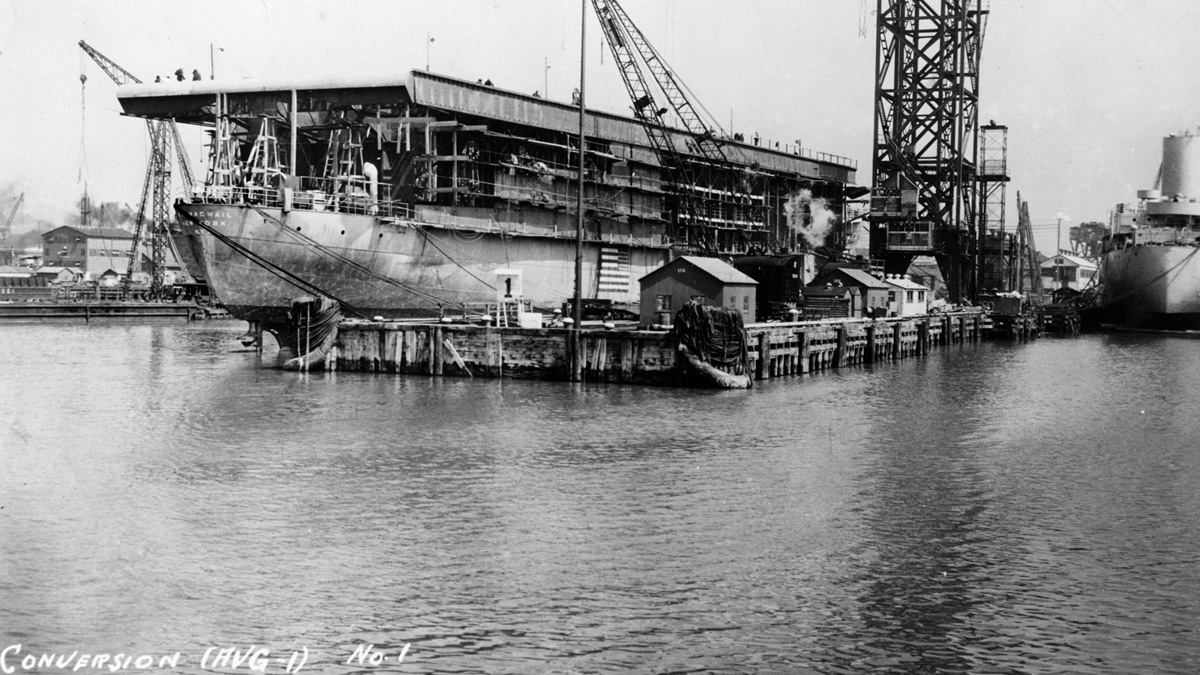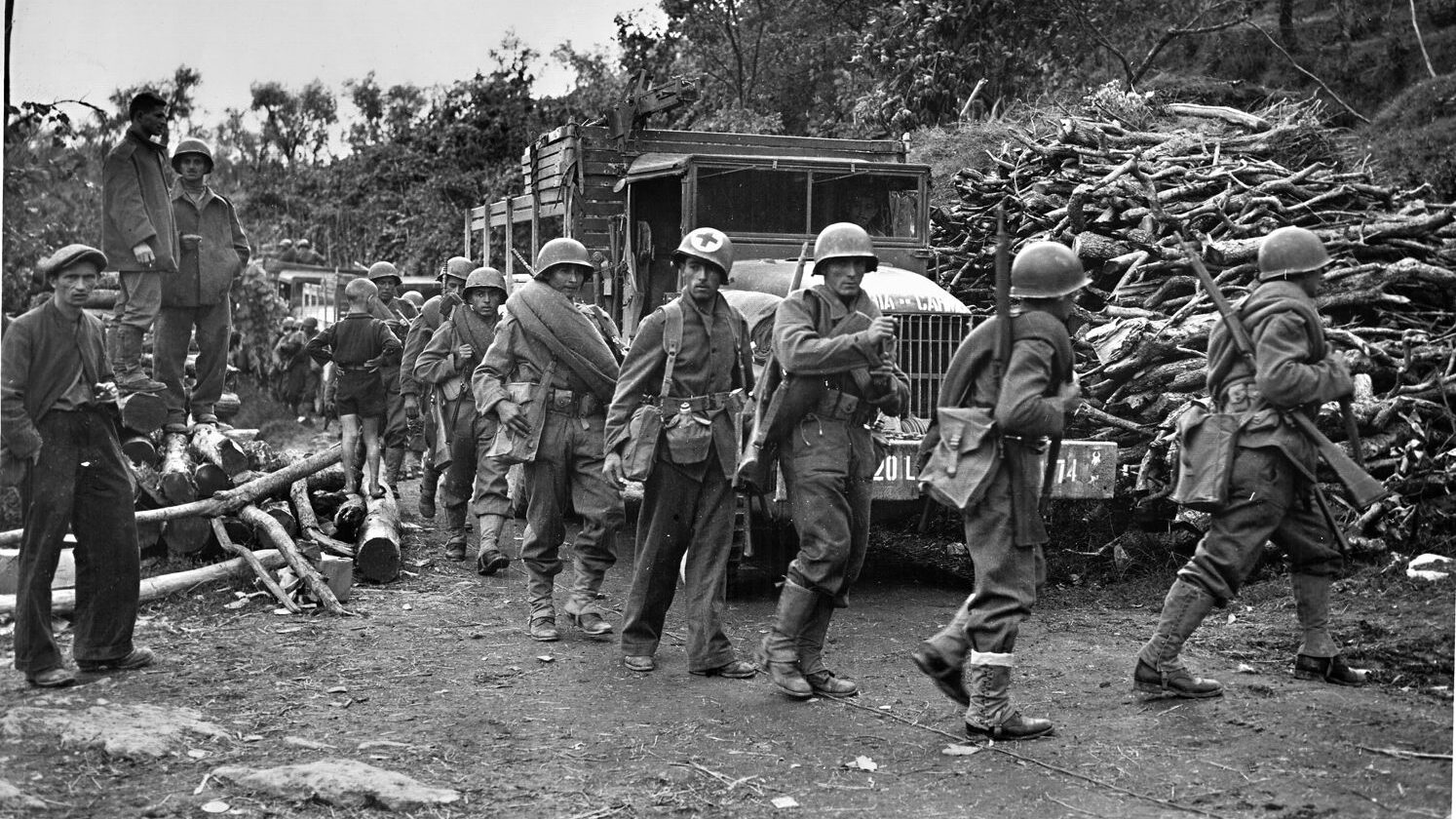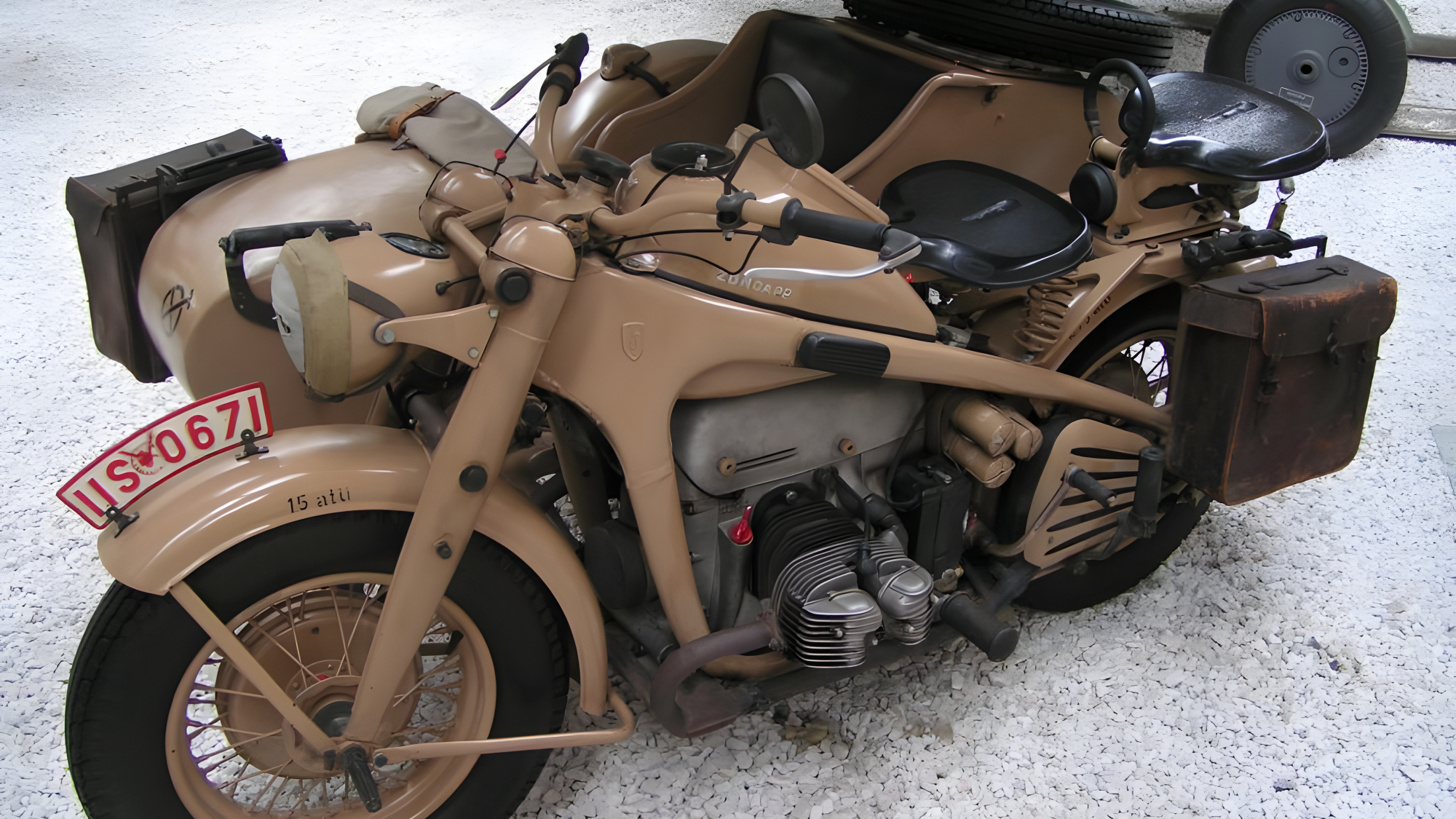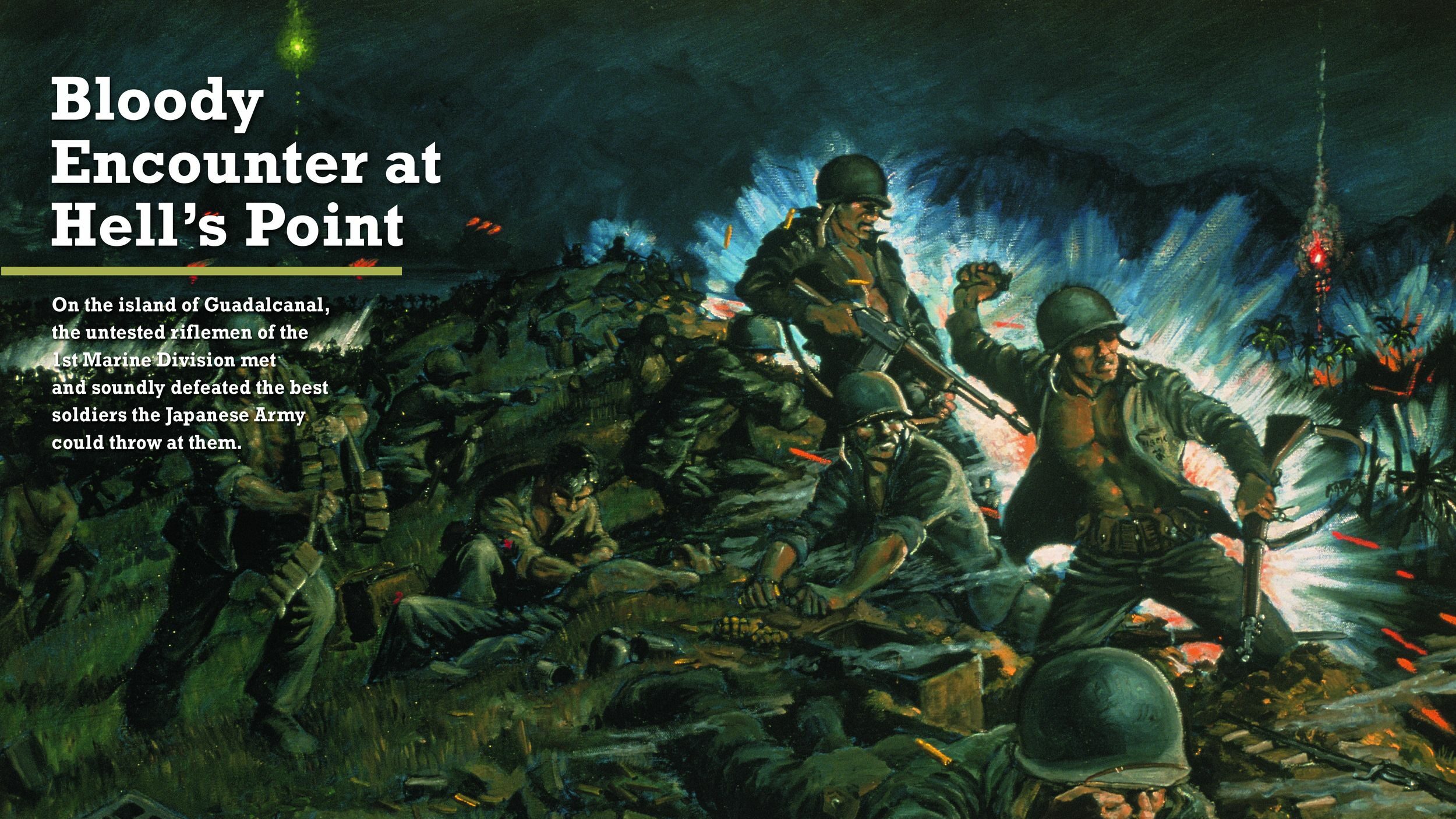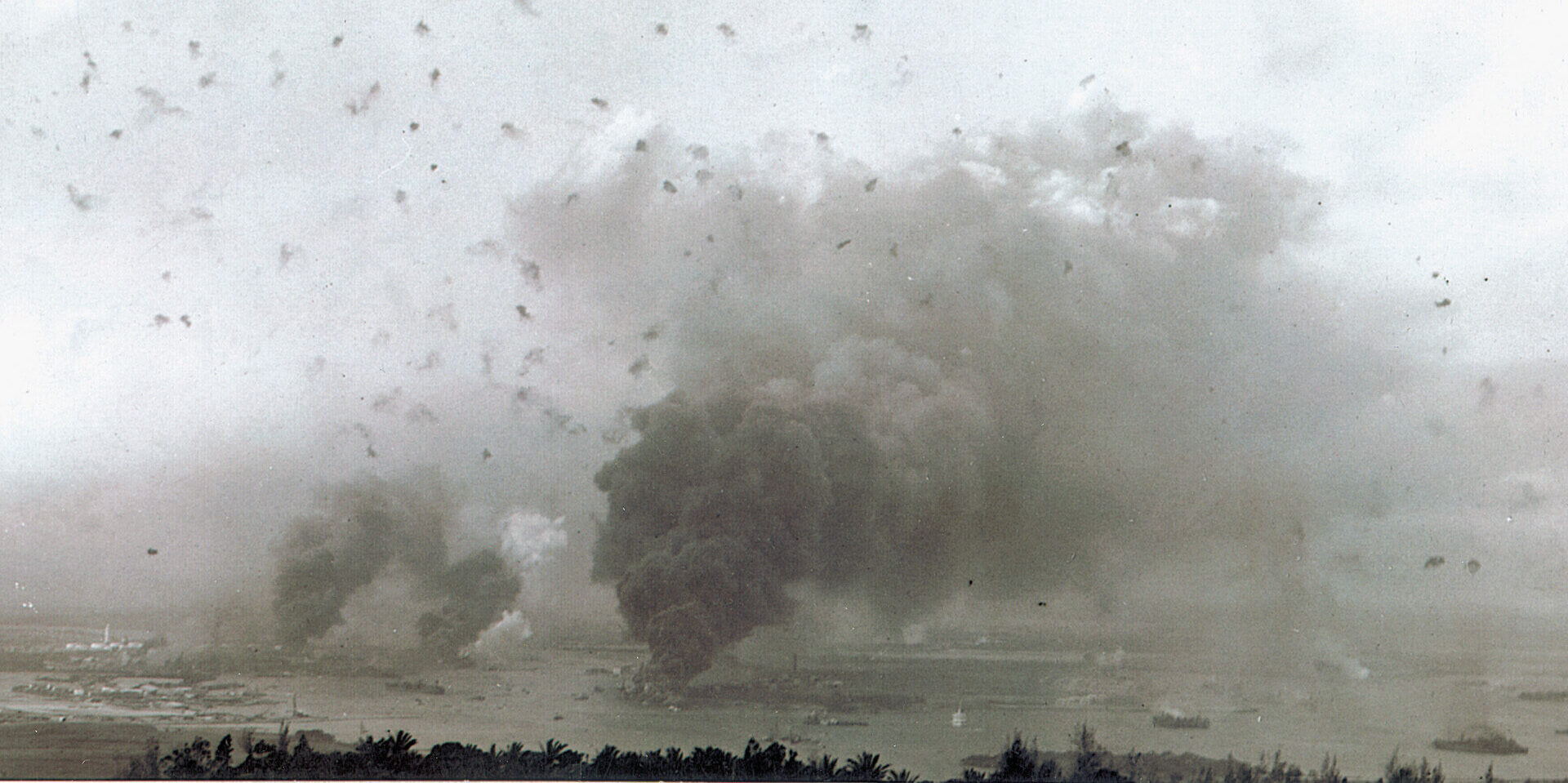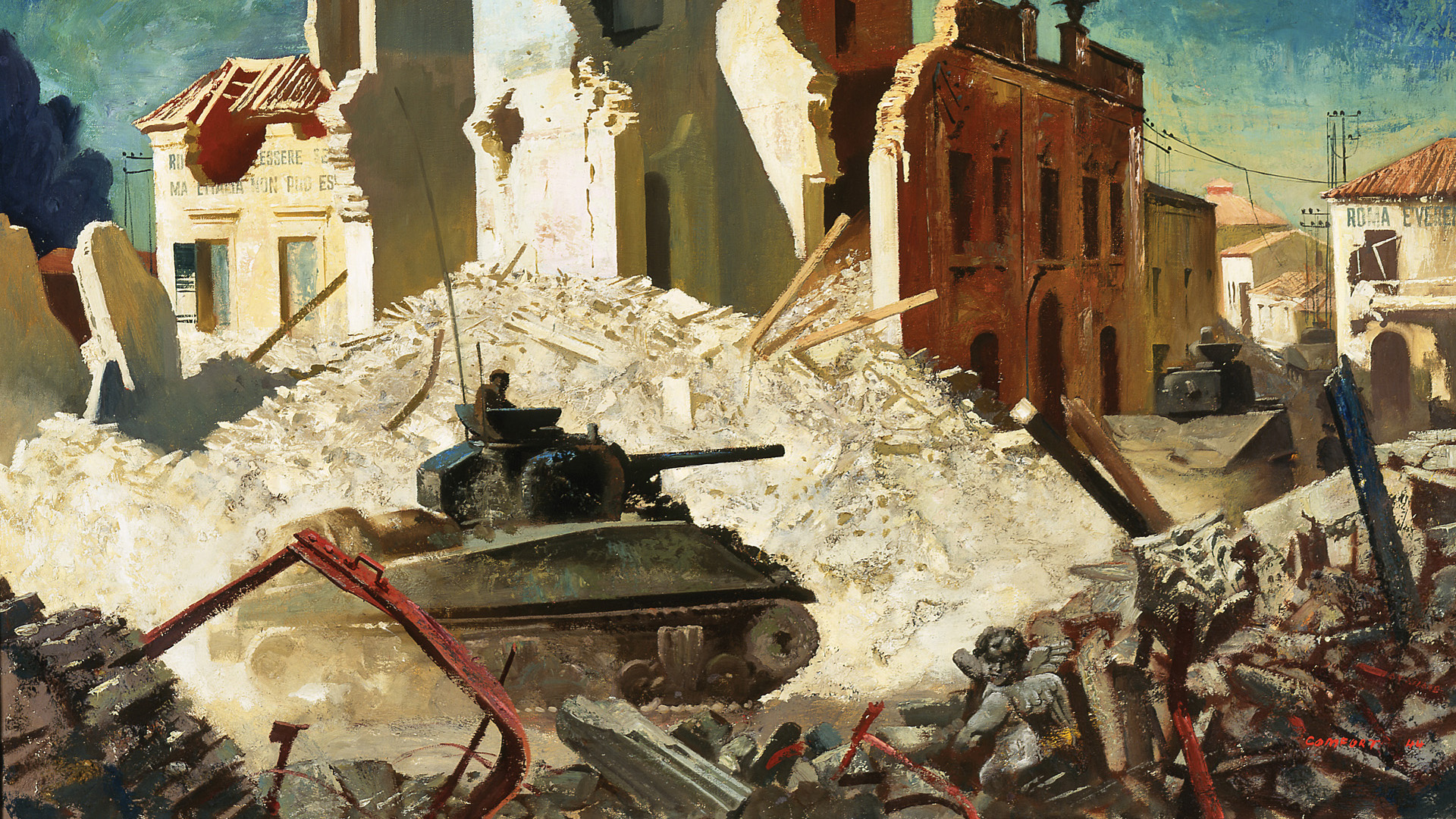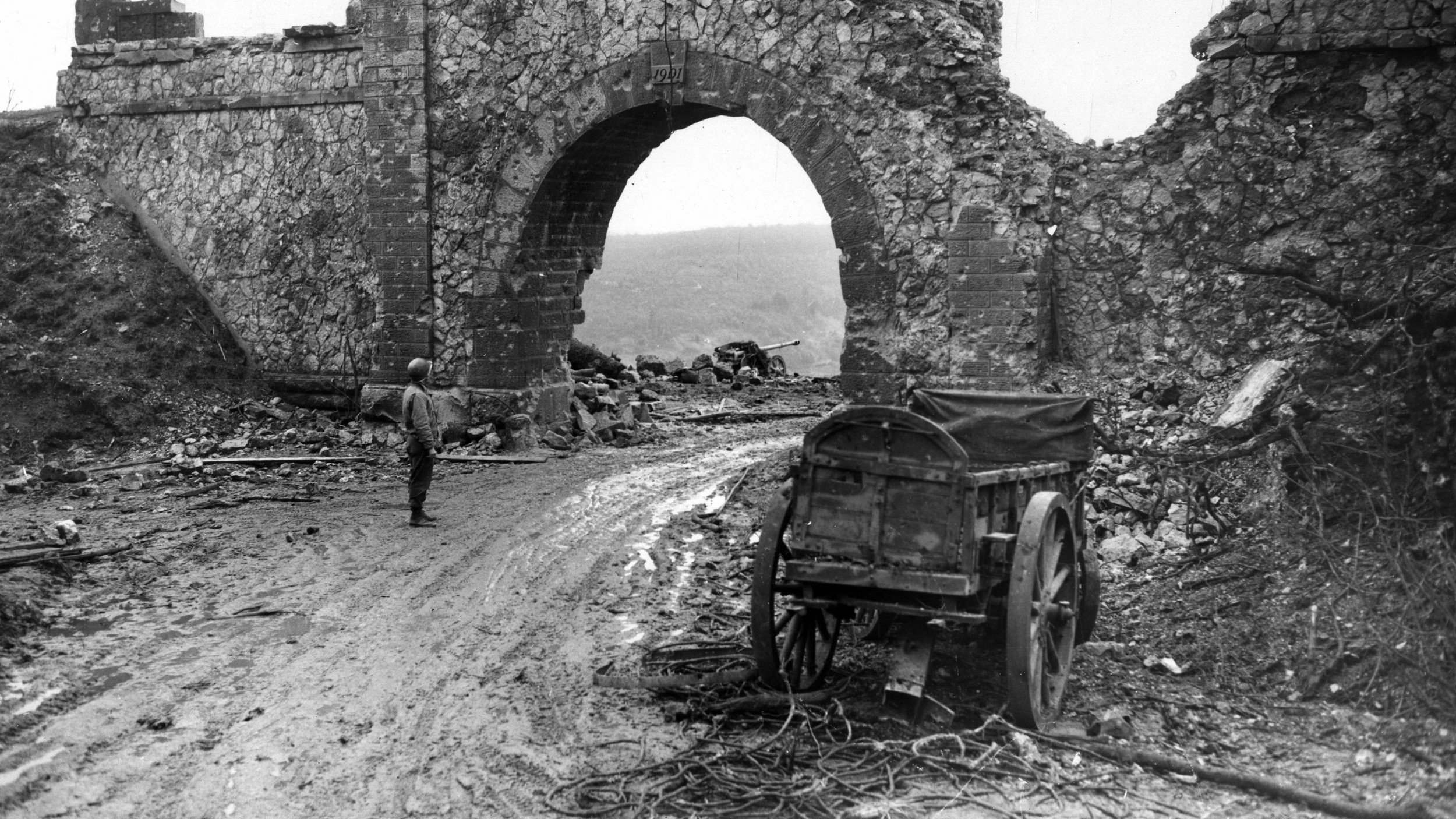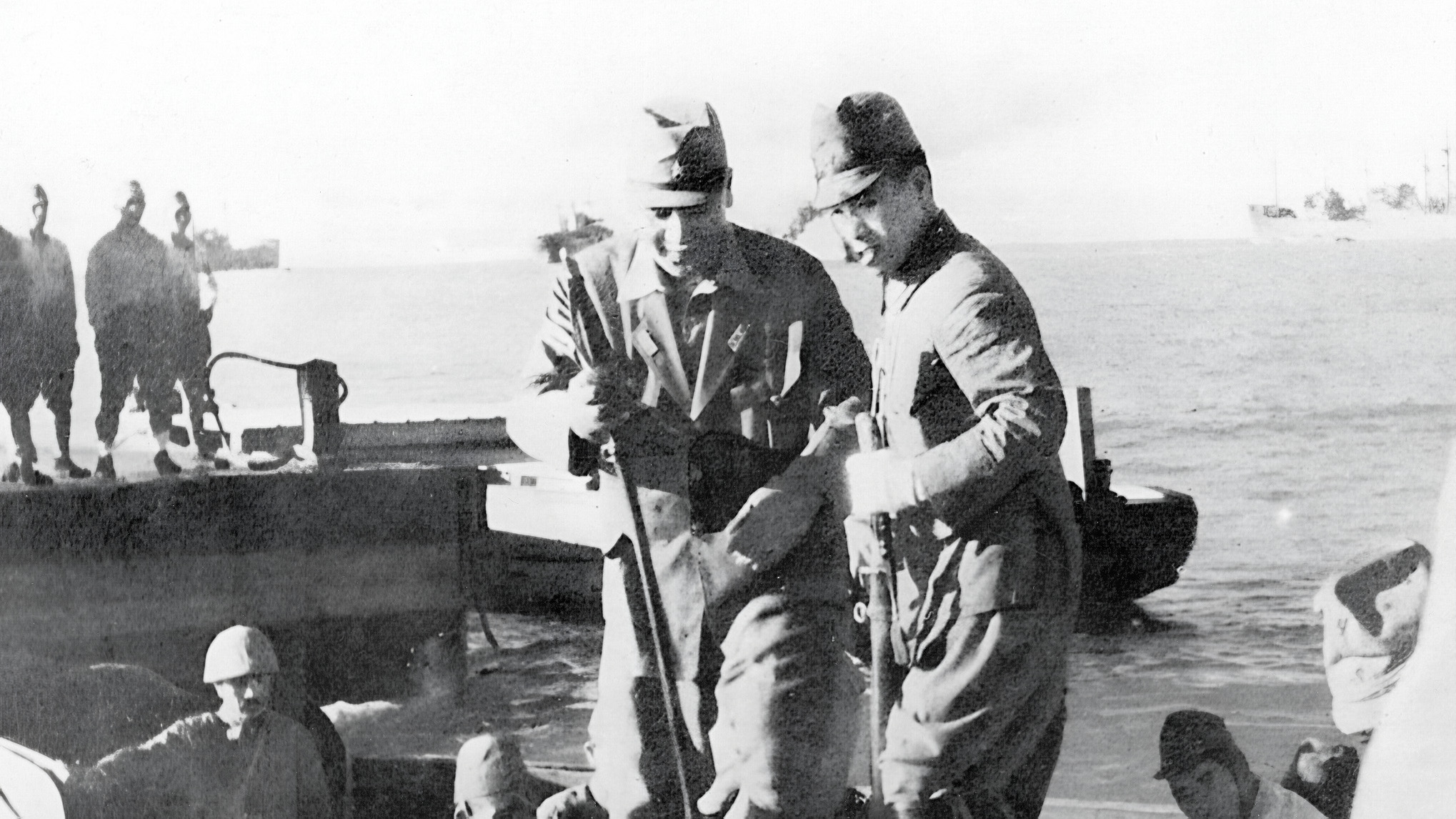By Michael Hull
Ungainly, slow, and lacking armor, the escort carriers of the American and British navies were the versatile, unsung workhorses of the second half of World War II.
In the Atlantic, the Mediterranean, the Pacific, and the Arctic, they shepherded convoys, hunted submarines, supported amphibious landings, and ferried men and planes. Although derided as “combustible, vulnerable, and expendable,” and sometimes dubbed “Woolworth carriers” and other more unprintable names, they performed a gallant and vital role in the Allied crusade against fascist tyranny.
The concept of these “jeep” flattops and ocean-going “Model Ts” dated back to the mid-1930s, a time when America, Great Britain, and Japan were investigating the possibility of converting merchant ships into small aircraft carriers, itself a continuation of practices first initiated during World War I. As early as 1935, the U.S. Navy’s Bureau of Construction and Repair studied the possibility of converting 10 passenger liners for military use, and they drew up plans for taking “quick action” in the event that a war emergency created the need for such vessels. By then, though, the Navy was already building a powerful fleet of big flattops, so the proposals for auxiliary carriers were soon put aside. As Navy Secretary Frank Knox told the U.S. Maritime Commission in the autumn of 1940, “The characteristics of aircraft have changed, placing more exacting demands upon the carrier. These demands are such that a converted merchant vessel can no longer make as satisfactory an aircraft carrier as was the case when the plans for those vessels were being drawn.”
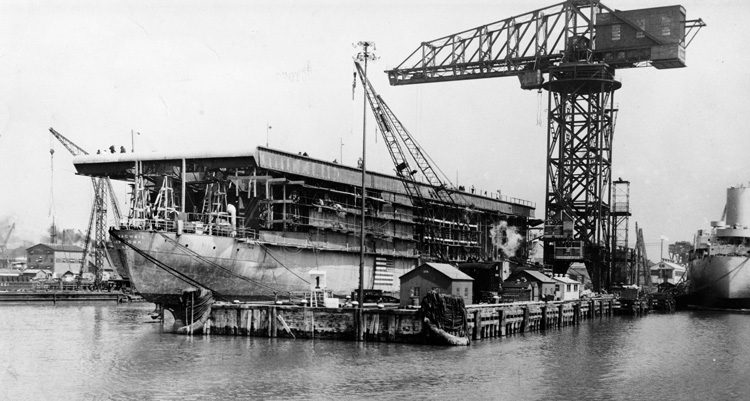
President Franklin D. Roosevelt nonetheless remained supportive of the concept, thanks to the influence of shipbuilder Henry J. Kaiser, whose shipyards were ready to gear up for wartime production, and British Prime Minister Winston Churchill, who saw the auxiliary flattops’ potential for quickly replenishing the Royal Navy’s crippling combat carrier force losses.
FDR sent a memorandum to Admiral Harold R. “Betty” Stark, chief of naval operations, proposing the experimental acquisition and conversion of a merchant ship of 6,000-8,000 tons displacement. It would be fitted with a flying deck and equipped with about 10 helicopters or 10 planes with low landing speed.
Stark and his aides went to work through January 1941 on Roosevelt’s proposal, one requirement of which was that the merchantman selected for conversion should have a sister ship that could be similarly converted for use by the British, who had been at war for a year and a half. On January 7, the Maritime Commission advised the Navy Department that the two C-3 diesel-powered cargo ships Mormacmail and Mormacland—492 feet long and 9,000 tons—would be made available for conversion to carriers. Stark estimated that the conversion project would take 18 months, but FDR imposed a deadline of three months.
The two vessels were acquired for conversion on March 6. Mormacmail’s conversion was finished in less than three months, and on June 2, the Navy recommissioned the ship—the war’s first escort carrier—as USS Long Island (CVE-1). Long Island was not used in combat, but she ferried aircraft to Pearl Harbor shortly after the Battle of Midway and carried 19 Grumman F-4F Wildcat fighters and a dozen Douglas Dauntless SBD dive-bombers to Espiritu Santo for use on Guadalcanal in late August 1942. For the rest of the war, the Navy used her to train carrier pilots and ferry troops. The converted Mormacland was turned over to the Royal Navy as HMS Archer on November 17, 1941—the first of 39 American-built escort carriers provided under the Lend-Lease program—and it subsequently served in the Battle of the Atlantic.
During the latter half of 1941, four more merchant hulls were rebuilt into escort carriers for the British—Avenger, Biter, Dasher, and Charger—and made ready for service in the spring and summer of 1942. The U.S. Navy rescinded the Lend-Lease transfer order for the Charger, which was commissioned on March 3, 1942, as its second escort carrier.
Ironically, the first Allied escort carrier to see combat was of enemy origin. The 5,527-ton, 15-knot German merchant ship Hannover was captured in the West Indies in March 1940 by a British light cruiser and a Canadian destroyer. Recommissioned in June 1941 and renamed HMS Audacity in July, the ship had its superstructure removed and replaced with a stem-to-stern, 475-foot flight deck.
Once in service, Audacity and its half-dozen Wildcat fighters (called Martlets in the Royal Navy) proved to be so effective at protecting Mediterranean convoys that Nazi U-boat chief Admiral Karl Dönitz felt compelled to pay rueful tribute to the “continuous air umbrella” the ship maintained. Shortly after ferrying survivors of the sunken fleet carrier HMS Ark Royal, Audacity was torpedoed by a U-boat on the night of December 19. Seventy-five officers and men perished, including her skipper, Commander D.W. McKendrick.
By the spring of 1942, the American escort carriers Long Island and Charger had become operational, while another 13 were undergoing conversion. These included Sangamon (CVE-26), Suwannee (CVE-27), Chenango (CVE-28), and Santee (CVE-29), which had been converted from new 7,192-ton, 19-knot tankers.
The Navy ordered 74 additional escort carriers during the summer of 1942, the first 24 of which were of the C-3 turbine type, led by USS Prince William (CVE-31). She was retained, and the other vessels were transferred to the Royal Navy when completed in 1943 and 1944. The other 50 escort carriers of the Casablanca class were built at the Kaiser Company yards.
Burly, bald “Hurry Up Henry” Kaiser, a self-made industrial tycoon who constructed the great Boulder, Bonneville, and Grand Coulee Dams before becoming America’s leading shipbuilder, had the ear of President Roosevelt. He convinced FDR that escort carriers were the answer to the U-boat menace and sold him on a design for mass-produced 498-foot, 6,730-ton flattops drawn up by the architectural firm of Gibbs & Cox. The Navy Department was dissatisfied with the design, but FDR authorized the construction program for “baby flattops,” which was to be managed by the U.S. Maritime Commission.
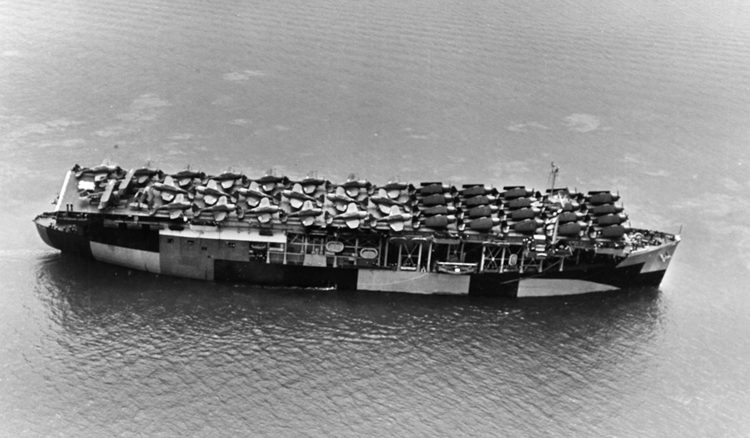
Kaiser, whose yards were also helping to turn out large numbers of Liberty cargo ships, used women welders, prefabricated parts, and Henry Ford’s assembly-line techniques. The CVEs were ordered on June 18, 1942, and the first was to be delivered the following February, but the lead vessel, USS Casablanca (CVE-55), was not commissioned until July 8, 1943, and Kaiser’s yards fell behind schedule. The 50th “Kaiser carrier” was completed on July 8, 1944, a year after the first, yet it still constituted an amazing feat of shipbuilding.
As with the C-3 conversions, the Kaiser-built flattops each featured two elevators and one catapult and could accommodate 30 operational aircraft, or up to 90 when used to replenish the big fleet carriers. Bigger, better armed, and more stable than Long Island, and fitted with small starboard islands, the later escort carriers of the Bogue and Sangamon classes were to prove invaluable in the Atlantic and Pacific campaigns.
From the Mediterranean to the Arctic, meanwhile, Allied jeep carriers were soon in action. HMS Avenger was the first carrier to escort merchantmen carrying vital supplies to Russia. While plying through fog, snow, and ice with Convoy PQ-18 in September 1942, her 12 Hawker Hurricane fighters and three Swordfish torpedo-bombers foiled U-boats and destroyed a number of planes. Seventeen out of the 39 merchant ships were sunk, but the German naval and air high commands blamed the Avenger for preventing more losses.
Seven British and American escort carriers joined forces when Operation Torch, the great three-pronged Allied invasion of North Africa, was mounted on Sunday, November 8, 1942. As 70,000 American and British troops were landing in Algeria and Morocco, an Anglo-American carrier group—Formidable, Victorious, Furious, and Argus of the Royal Navy, plus the USS Ranger (CV-4)— supported by a force of CVEs stood at their backs. Wildcats and Grumman TBF Avengers from Suwannee flew combat air and antisubmarine patrols; Sangamon provided air support north of Casablanca; Chenango ferried 78 U.S. Army Air Forces P-40 Warhawk fighters to captured airfields and later took aboard 500 survivors of a sunken British destroyer tender, while Wildcats, Avengers, and Dauntlesses from the Santee neutralized the airfield at Marrakech. Sea Hurricanes and Swordfish from the British CVEs Biter, Dasher, and Avenger flew close support for the assault troops, and a fourth, HMS Archer, ferried 35 USAAF P-40s to Port Lyautey.
It was during the grim, prolonged Battle of the Atlantic that British and American escort carriers, sailing in new hunter-killer groups with fast destroyers, made their most important contribution of the war. The CVEs were deployed in the spring of 1943 and soon succeeded—along with the aid of new tactics, land-based, long-range bombers, improved radar, and homing torpedoes—in closing the mid-ocean “black pit” where German submarines had savaged Allied convoys at will.
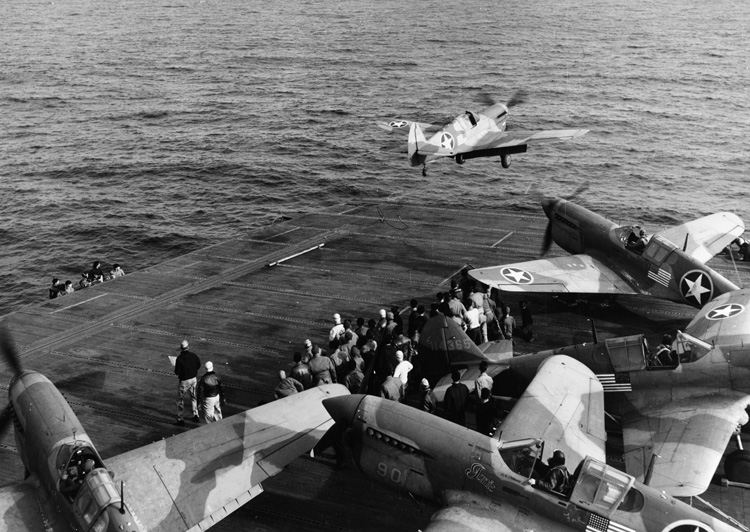
Forty-one U-boats were sunk that May, making a total of 114 lost in the first five months of the year, and this turned the tide of the struggle. Admiral Dönitz admitted privately that he had lost the Battle of the Atlantic and began deploying his boats to safer waters. In the next several months, 62 Allied convoys crossed the Atlantic without losing a single ship. The British, American, and Canadian navies, meanwhile, used the subsequent convoys to lure and destroy more U-boats.
For several months in the Pacific War, after the Long Island had delivered the two Marine Corps squadrons to Guadalcanal, almost all of the escort carriers assigned there were relegated to tedious replenishment duties and had to wait for action. Their bored crews groused while transporting personnel and equipment for the fast carrier groups. Only Nassau had briefly engaged in combat (in the Aleutians). But the CVEs’ time was coming, and they would prove indispensable as the U.S. Navy’s powerful task forces pushed across the Central Pacific in a great island-hopping offensive toward Japan.
Eight Kaiser-built carriers were in action with Vice Admiral Raymond A. Spruance’s U.S. Fifth Fleet when Maj. Gen. Julian C. Smith’s 2nd Marine Division and Maj. Gen. Ralph C. Smith’s 27th Infantry Division invaded Makin, Betio, and Tarawa Atolls in the Gilbert Islands on November 20-23, 1943. Coral Sea (CVE-57), Corregidor (CVE-58), and Liscome Bay (CVE-56) were with the Makin assault group, and Sangamon, Suwannee, Chenango, Nassau, and Barnes (CVE-20) were with the Tarawa group. With their Avengers, Wildcats, Dauntlesses, and Grumman F-6F Hellcats strafing and bombing in support of the landing troops, the CVEs added almost 200 aircraft to the 700 planes put up by the invasion force’s 11 fast carriers. After bitter fighting and heavy losses for the Marines, the three atolls were secured on November 23.
The three jeep carriers of Rear Admiral Henry M. Mullinix’s Task Group 52.3—Liscome Bay, Corregidor, and Coral Sea—had fought gallantly in their first action, and their weary crews were justifiably proud after the three hectic days and nights of the complex and massive operation. The Japanese had been soundly defeated ashore, but their naval units were closer than the Americans realized, and tragedy came early on November 24.
A newly arrived Japanese submarine, I-175, was stalking the CVEs, and flares dropped during the night of November 23-24 by a Mitsubishi G4M Betty bomber gave her a clear view of Captain Irving D. Wiltsie’s USS Liscome Bay as she cruised near Butaritari Island. At 5:10 am on November 24, Lt. Cmdr. Sunao Tabata’s submarine slipped through a gap left by two escorting destroyers and loosed a spread of torpedoes. One of them struck Liscome Bay in the worst possible spot—the ordnance storage area between her forward and aft engine rooms.
Crewmen aboard the other CVEs watched in silent horror as two violent explosions rocked the carrier and a column of bright orange flame rose 1,000 feet. Fragments of the ship and airplanes were hurled into the air, and debris rained on vessels as far as 5,000 yards away. The aft section of Liscome Bay was ablaze, and half of her virtually disintegrated. More blasts shook her, and she sank stern first 23 minutes after being hit. She was the first of six U.S. escort carriers to be sunk in the war.
Among the 644 officers and men who went down with Liscome Bay were Captain Wiltsie, Admiral Mullinix, who had been flying his flag on her, and Dorie Miller, the black messman who had won the Navy Cross for heroism aboard the battleship USS West Virginia (BB-48) at Pearl Harbor on December 7, 1941, a stunning loss for the Navy.
Eight escort carriers were in the thick of action from January 31 to February 5, 1944, during Operation Flintlock, the invasion of Kwajalein and Roi-Namur Atolls in the Marshall Islands by Marine and Army units of Maj. Gen. Holland M. Smith’s 5th Amphibious Corps. They were the veteran Chenango, Coral Sea, Corregidor, Nassau, Sangamon, and Suwannee and the brand new Manila Bay (CVE-61) and Natoma Bay (CVE-62). Two hundred fighters and torpedo planes from the CVEs lent air cover to the landing ships and close support to the assault troops, who took Kwajalein after six days of bitter fighting.
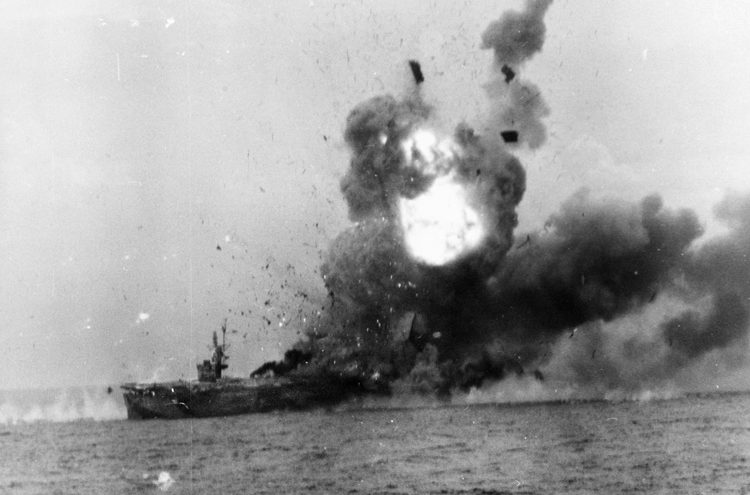
The fleet and escort carrier groups kept up their forward momentum with the invasions in late February of Eniwetok, 360 miles northwest of Kwajalein, and Truk Atoll, the Japanese “Gibraltar of the Pacific.” The American offensive rolled on relentlessly, and the jeep carriers gave valuable support in numerous assaults on Japanese-held islands: the Admiralties, Hollandia, Saipan, Tinian, Guam, New Guinea, and the Bonins.
Bigger and improved escort carriers began joining the task forces in the Pacific through 1944 and into 1945 as the Japanese were pushed back toward their home islands, proving indispensable in the naval actions at Samar, Surigao Strait, Cape Engano, the South China Sea, and Leyte Gulf, as well as the invasions of the Palaus, the Philippines, Iwo Jima, and Okinawa. Despite their excellent service, though, several were sunk by bombs, gunfire, or submarine torpedoes. The losses increased dramatically when the desperate Japanese launched kamikaze assaults during the fierce Leyte Gulf and Samar actions in late October 1944.
Off Samar on October 25, Gambier Bay (CVE-73) was fighting as part of Rear Admiral Clifton A.F. Sprague’s Seventh Fleet task group when she was struck by gunfire. She took more hits than her damage control parties could handle, lost power, and listed before capsizing and sinking with about 850 of her crew. Two other flattops, Kitkun Bay (CVE-71) and Kalinin Bay (CVE-68), were damaged but kept afloat. More of Sprague’s carriers, including Fanshaw Bay (CVE-70), Santee, and Suwannee, suffered damage and crew losses while struggling to dodge kamikaze attacks.
The Japanese assaults intensified on October 26 when a suicide Zero slammed into St.-Lo (CVE-63) in Leyte Gulf, detonating bombs and torpedoes on her hangar deck. A series of blasts almost blew her apart, and she sank with about 100 of her crew. St.-Lo was the first U.S. vessel sunk by a kamikaze.
The Americans shattered the Japanese fleets in the great Battle of Leyte Gulf, but the kamikazes continued to take a heavy toll during the campaign to liberate the Philippines. In November 1944 alone, they crashed into seven fleet carriers and damaged two battleships, two cruisers, two transports, and seven destroyers. When Vice Admiral Jesse B. Oldendorf and Admiral Kinkaid led task forces into Lingayen Gulf during the invasion of Luzon early in January 1945, escort carriers were again targeted. Kitkun Bay and Kadashan Bay (CVE-71) took hits and were disabled, and Ommaney Bay (CVE-79) was fatally damaged and had to be finished off with a torpedo from a destroyer. The flattop’s casualties totaled 93 dead and missing and 65 wounded.
Wildcats, Hellcats, Avengers, and Dauntlesses from a dozen escort carriers commanded by Admiral Durgin flew close support when the U.S. 4th and 5th Marine Divisions invaded the eight-square-mile volcanic island of Iwo Jima on February 19, 1945. Kamikaze attacks on the CVEs started just a couple of days later. On the night of February 21-22, a Japanese twin-engine Betty bomber headed toward Lunga Point (CVE-94). Her sister ship, Bismarck Sea (CVE-95), opened fire and shot down the plane. A few seconds later another plane streaked in low toward Bismarck Sea and crashed abeam of her aft elevator.
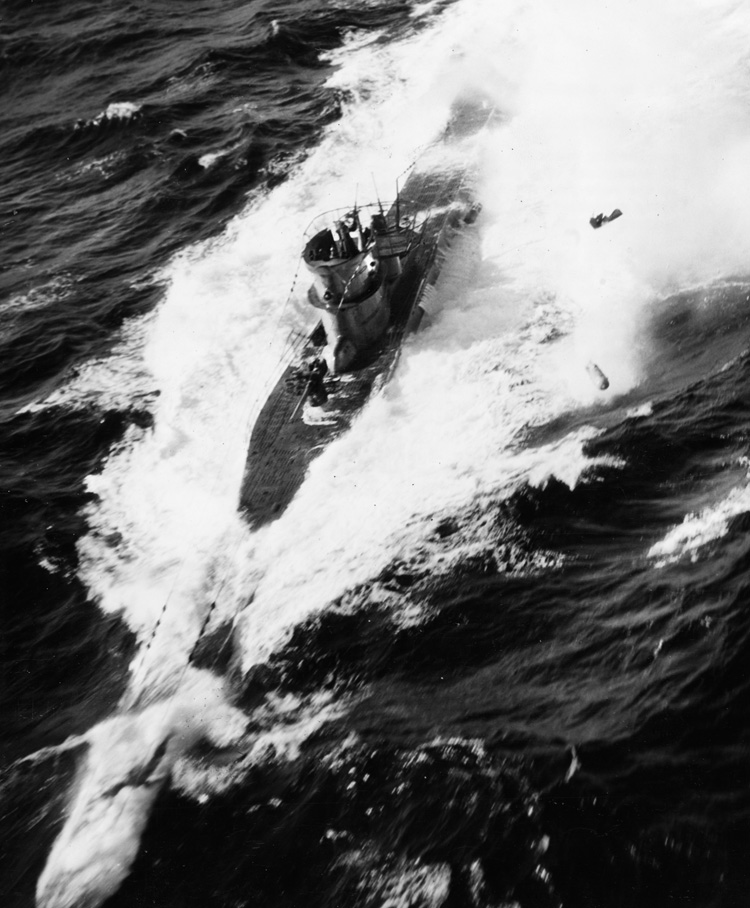
As fires broke out, a second bomber dived vertically onto the hapless flattop. The hangar deck, filled with planes, was soon an inferno. When the fires neared her torpedoes and bombs, the order was given to abandon ship. Bismarck Sea, one of the last of the Casablanca-class carriers from the Kaiser yards to see action in World War II, burned and exploded until she rolled over and sank with 218 of her 943-man crew. Lunga Point, meanwhile, was damaged by four more planes, but it survived.
Then came Operation Iceberg, the climactic invasion of Okinawa in the Ryukyu Islands that was intended to tighten the blockade of Japan, intensify raids on its cities, and provide a staging base for an amphibious assault on Kyushu, Japan’s southernmost home island. After bombardments by Rear Admiral Morton L. Deyo’s 52-vessel Task Force 54 in late March, a massive armada of Admiral Spruance’s Fifth Fleet moved in for the last major action of the Pacific War. It comprised Admiral Marc A. Mitscher’s Task Force 58 and Vice Admiral Richmond Kelly Turner’s Task Force 51, with Vice Admiral Sir H. Bernard Rawlings’s Task Force 57 of the newly formed British Pacific Fleet providing air cover support between Okinawa and Formosa. Twenty-nine CVEs led by Admiral Durgin took part.
Early on the morning of Sunday, April 1, 1945, assault troops of Lt. Gen. Simon Bolivar Buckner’s U.S. Tenth Army and the 1st, 2nd, and 4th Marine Divisions landed on Okinawa’s western coast. Initial resistance was sporadic, but the stubborn defenders had dug themselves into hills, caves, and pillboxes, forcing American troops to fight for virtually every yard. During the campaign, which dragged on until June 21, the Allied support ships suffered repeated onslaughts by Japanese torpedo bombers and kamikazes. In the costliest naval operation in history, 34 U.S. vessels were sunk and 368 damaged, and more than 4,900 sailors perished.
The air groups from Durgin’s versatile CVEs flew about 18,133 sorties at Okinawa, expending 2,000 tons of bombs and 30,000 rockets that destroyed numerous ground targets and 280 enemy planes.
Although their potential was questioned, the escort carriers proved versatile in both the Atlantic and Pacific during World War II, validating their existence with bold deeds.
